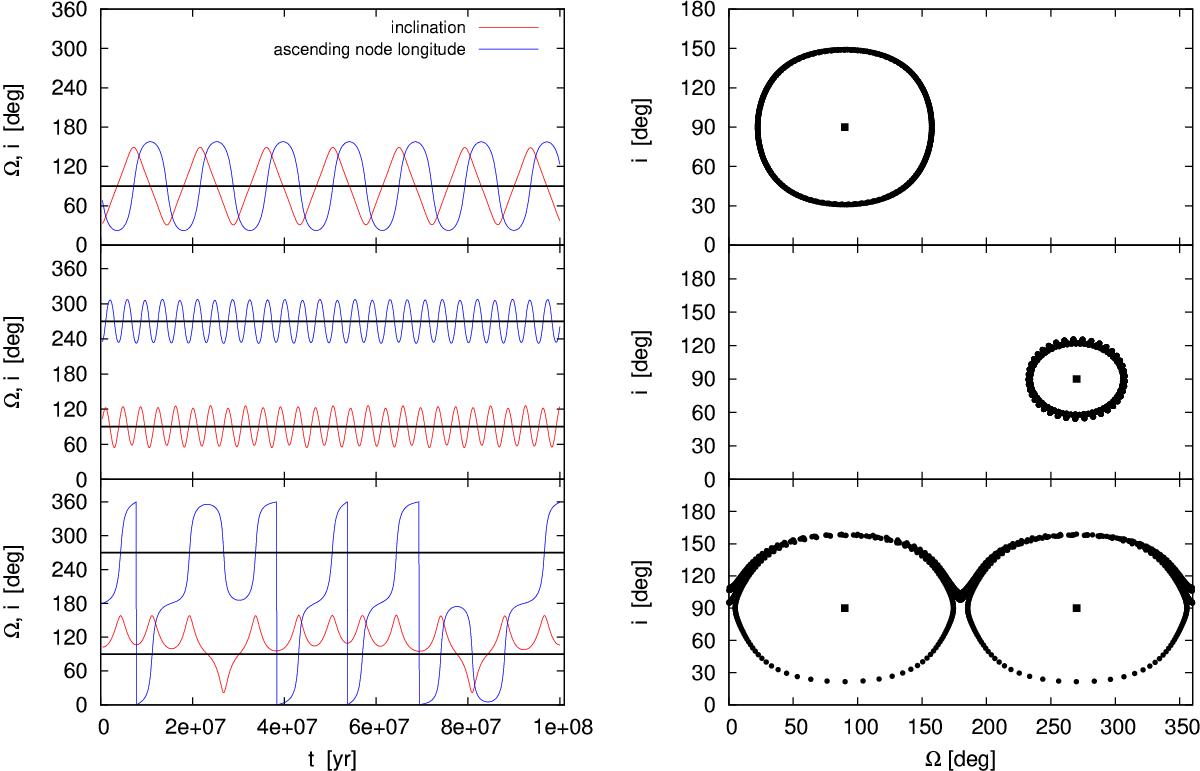Fig. 7

Evolution in time of the inclination i (red line) and the ascending node longitude Ω (blue line) of three different test particles (left side) of the same simulation. On the right side, the coupling of inclination i and the ascending node longitude Ω for the same particles. The semimajor axis and eccentricity of the surviving giant planet are a = 0.95 au and e = 0.73. Top panels: the particle’s orbit flips while the Ω librates around 90° (black line). The orbital parameters immediately after the instability event (hereafter, post IE parameters) for this particle are a1 = 16.9 au, e1 = 0.2, i1 = 31.4°, ω1 = 131.7°, and Ω1 = 79°. Middle panels: the particle’s orbit flips while the Ω librates around 270° (black line). The post IE orbital parameters for this particle are a2 = 16.61 au, e2 = 0.54, i2 = 93.2°, ω2 = 2°, and Ω2 = 232.5°. Bottom panels: the orbit flips while the libration center of Ω changes from 270° to 90° along its evolution (black lines). The post IE orbital parameters for this particle are a3 = 23.34 au, e3 = 0.77, i3 = 102.4°, ω3 = 53.19°, and Ω3 = 178.8°.
Current usage metrics show cumulative count of Article Views (full-text article views including HTML views, PDF and ePub downloads, according to the available data) and Abstracts Views on Vision4Press platform.
Data correspond to usage on the plateform after 2015. The current usage metrics is available 48-96 hours after online publication and is updated daily on week days.
Initial download of the metrics may take a while.




